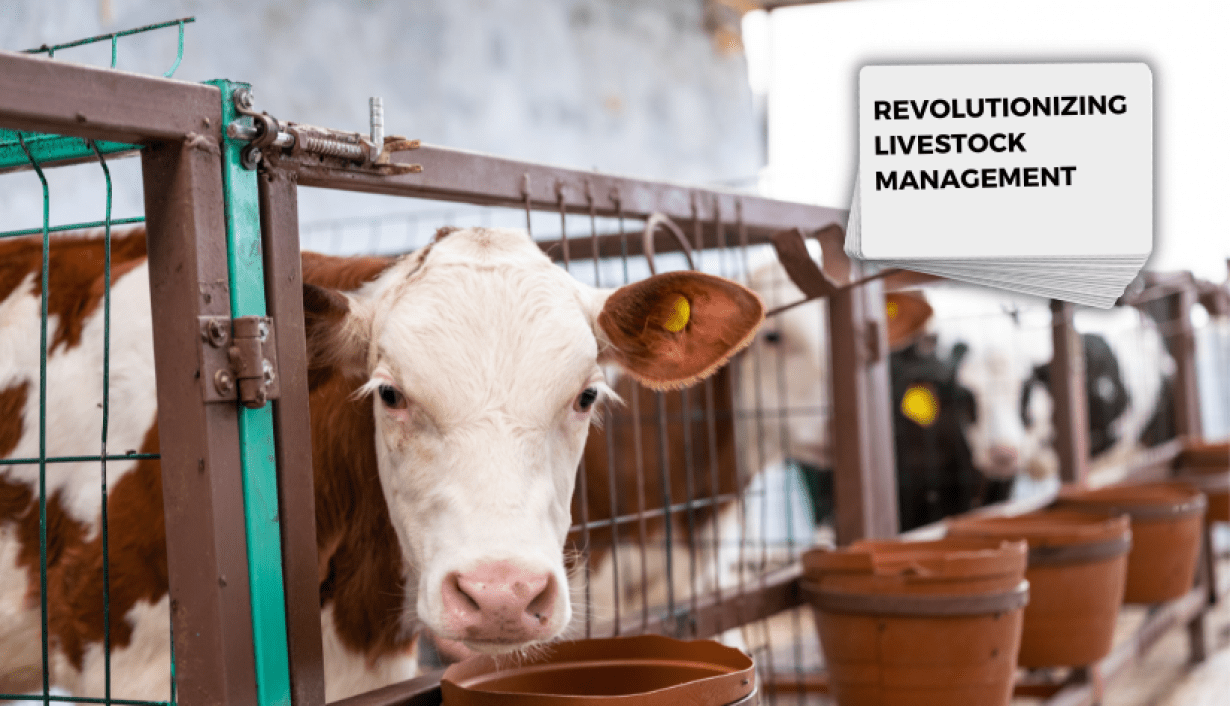
Radio-Frequency Identification (RFID) technology has emerged as a transformative force in contemporary livestock management, fundamentally altering the methodologies employed for animal monitoring and care. This technology leverages RFID tags, often in the form of ear tags, which incorporate a microchip and antenna capable of storing and transmitting data. The adoption of RFID technology has demonstrably enhanced both efficiency and productivity within the livestock sector. This article will explore the ways in which RFID is reshaping livestock management practices. We will examine the innovative solutions offered by RFID technology to optimize efficiency and augment productivity in this vital industry.
Applications of RFID Technology in the Livestock Industry
RFID technology finds diverse applications across the livestock industry, addressing several critical areas. The primary applications are detailed below:
Animal Identification
RFID ear tags are a prevalent method of identification within the livestock industry. Each animal is fitted with an RFID ear tag containing a unique identification number encoded on a microchip and antenna. Using RFID readers, farmers can rapidly and accurately identify individual animals and access pertinent information, including breed, age, and health records.
Intelligent Feeding Management
Automated feeding systems utilize RFID technology to ascertain the specific dietary requirements and feeding schedules of individual animals. RFID sensors, integrated into feeding stations, detect the presence of animals and record their feeding behavior. This data enables farmers to monitor feeding patterns and adjust feed formulations as necessary to ensure optimal nutrition.
Animal Behavior Prediction
RFID technology facilitates the prediction of animal behavior patterns, including estrus detection and the identification of abnormal behaviors. RFID sensors, often integrated into wearable devices or collars, continuously monitor activity levels and movement patterns. By analyzing this data using sophisticated algorithms within RFID data management software, farmers can anticipate breeding cycles and identify deviations from normal behavior that may indicate underlying health concerns.
Epidemic Prevention and Disease Control
RFID plays a vital role in the rapid identification and isolation of sick animals to mitigate the spread of disease. RFID sensors can monitor vital signs, such as body temperature, to detect early indicators of illness. Upon detection of anomalies, RFID readers alert farmers, enabling them to promptly isolate affected animals and administer appropriate treatment.
Product Traceability
RFID enables comprehensive tracking of an animal’s origin, breeding history, and vaccination records throughout the supply chain. Each animal is tagged with an RFID ear tag containing relevant information, accessible via RFID readers at various checkpoints, including farms, processing facilities, and retail outlets. This ensures complete traceability and transparency, empowering consumers to make informed purchasing decisions.
Management Efficiency Enhancement
RFID technology streamlines various management processes inherent in animal husbandry. By providing unique identification for each animal and facilitating immediate access to individual animal information, RFID enables farmers to track and manage their livestock inventory with greater efficiency. This translates to time savings and reduced labor costs associated with manual record-keeping and monitoring activities.
The widespread implementation of RFID technology yields numerous benefits for the livestock industry, including improved management efficiency, cost reduction, enhanced animal health and welfare, and robust product traceability.
Benefits of RFID Technology in Animal Husbandry
The adoption of RFID technology in the livestock industry has resulted in the following advantages:
Improved Management Efficiency
RFID technology streamlines various management processes in animal husbandry. By uniquely identifying each animal and providing instant access to individual animal information, RFID helps farmers track and manage their livestock inventory more efficiently. This leads to time savings and reduces labor costs associated with manual record-keeping and monitoring.
Cost Reduction
RFID technology contributes to a reduction in overall operational costs within animal husbandry. By enhancing management efficiency and mitigating the risk of disease outbreaks, RFID enables farmers to optimize resource allocation. This can result in savings related to feed, medication, and other operational expenses, ultimately enhancing the profitability of livestock farming operations.
Enhanced Animal Health and Welfare
RFID facilitates improved monitoring of animal health and behavior, leading to enhanced animal welfare outcomes. By tracking individual animal health status and behavior patterns, farmers can promptly detect signs of illness or distress and implement timely interventions. This contributes to the overall health and well-being of livestock, resulting in higher-quality products and more sustainable farming practices.
Promotion of Sustainable Livestock Farming
RFID promotes sustainable farming practices in animal husbandry. By optimizing resource utilization and reducing environmental impact, RFID helps farmers minimize waste and reduce their ecological footprint. This contributes to a more sustainable and environmentally responsible approach to livestock farming, ensuring the long-term viability of the industry.
RFID technology has revolutionized the livestock industry, enhancing efficiency, reducing costs, and improving animal welfare. As technology continues to evolve, the potential of RFID in livestock management is expected to expand, offering more precise monitoring capabilities and seamless integration with other technologies. Farmers are encouraged to remain informed and embrace RFID technology to optimize their practices for sustainable and profitable farming outcomes.
RFID Card Low Frequency 125KHz IC EM4200
![]()
The EM4200 RFID cards are made with High-quality PVC sheets in the size of CR80. EM4200 is designed to replace EM4100/4102 and EM4005/4105, which the chip provides higher reading range performances Compared to EM4100/4102 and EM4005/4105. EM4200 is a CMOS integrated circuit intended for use in electronic Read Only RF transponders.

RFID Antenna UHF
15-Meter Cable for UHF RFID Fixed Reader
UHF Tag
4″x2″ 860-960MHz UHF RFID Label RFID M4D
UHF Tag
4″x4″UHF RFID Label Alien H3 | ISO18000-6C
RFID Antenna UHF
5-Meter Cable for UHF RFID Fixed Reader
HF Card
ABS RFID KEY-FOB Tag RFID Classic 1K
HF Card
ABS RFID KEY-FOB Tag RFID Classic 4K
HF Card
ABS RFID KEY-FOB Tag RFID Ultralight C
HF Tag
ABS RFID KEY-FOB Tag RFID Ultralight EV1
LF Card
ABS RFID KEY-FOB Tag ATA5577
LF Card
ABS RFID KEY-FOB Tag EM4200
HF Card
ABS RFID KEY-FOB Tag EM4305
HF Card
ABS RFID KEY-FOB Tag RFID TAG 213